How Working From Home Is Changing The Way We Think About Where We Live
How Working From Home Is Changing The Way We Think About Where We Live
How Working From Home Is Changing The Way We Think About Where We Live
Can you remember three months ago? In just 90 days, things have changed dramatically. Just 90 days. Yet, in that short amount of time, the way we think about where we live and how we live has completely changed.
In the latter part of those 90 days, I have heard from many people that the pandemic has forced their hand and has actually inspired investment in new technology or motivated a change in operations. These changes are adding up to huge impacts.
One of the big changes is the work-from-home policy. What started as a way to keep employees safe at home is now turning into the most popular work trend across the country, inspiring companies everywhere to step away from very large real estate construction projects and lease deals.
When office real estate is expensive and the country is facing an economic meltdown, and a work-from-home trend falls from the sky, it would be silly not to take it, right?
This Margins article reports that 40% of all venture capital funding in Silicon Valley actually goes to landlords instead of product development, and admits that even though it’s a big number, it is probably very conservative.
Most Popular In: Real Estate
Which, again, points to the soundness of organizations running away from physical real estate.
Massive global corporations across the country are either going completely or partially remote. The list starts with Twitter, which decided to go 100% remote. Other companies, like Mondelez, Nationwide, Facebook and Barclays, are also considering a permanent shift to work from home.
“It takes three months to form a habit,” says Mollie Carmichael, a principal at the real estate research firm Meyers Research. “We have been in COVID for three months, and because of this three-month period, we have gained trust and routine for working at home. We are going to see businesses letting more employees work remote.”
A survey conducted by the research firm Gartner reported that 75% of respondents plan to increase the number of permanent remote employees.
Another benefit from dedicating to a complete remote workforce is that the talent pool would be much broader than what could be found within a certain geographic circumference around the office. Some corporations, like Facebook, are looking at this as an opportunity to adjust pay scales as well, another silver lining to the work-from-home situation for the companies.
On the Other Side of Pay Day
Yes, this can be good for corporations, but what about the people who work for them? The majority of workers are rejoicing.
First, if these changes save the company money and that means they can keep their job, then, of course, that’s a win.
On top of that, the work-from-home world gives them flexibility, gets rid of the commute and lands them more family and leisure time.
Carmichael says that many of her clients love work from home because they are finally reconnecting with their family, and even starting to look at life a little differently.
HANLEY WOOD
A Hanley Wood flash survey showed that 60% of those working from home would like to continue to work from home. This recent Gallup poll, also showed that nearly 60% of respondents said that they would like to keep working remotely after restrictions on businesses and schools have been lifted.
Is there more than that?
There are also social reasons to cheer a more remote future. It might help reverse the geographic stratification of American life. Plus, remote work is showing a positive impact on the environment, since less commuting means fewer emissions.
Moving Out of the Office and Out to the Burbs
Urban lovers are giving up what they prize about city lifestyle to save money. The Hanley Wood survey also asked if employees would consider moving to a new home if they were allowed a permanent remote work situation—more than 36% said yes.
That number shoots up to 55% when respondents were asked if they would move if they currently lived in an expensive market and could go all remote. The affordability of the market, made a big swing in responses.
HANLEY WOOD
Which is certainly evident from what Facebook CEO Mark Zuckerberg told the Wall Street Journal recently. He said that about 75% of his employees expressed some interest in moving to a different city if they could work remotely. Certainly, anywhere would be more affordable than living near the Silicon Valley headquarters where the cost of living is ballooning because of a lack of new housing and because of the wealth created by the tech boom.
Carmichael pointed to online data on moving trends that definitely supports the idea that people are looking for places to live outside of urban areas.
“People will seek out the big house on the hill or the larger home away from everything because of the quality of life it gives you,” Carmichael says. “You get more space, better lifestyle, maybe drive in two times per week or don’t go into the office at all.”
Tom Woliver, principal and owner of a master planned consulting firm called Oxland Advisors, shared that opportunistic buyers can find deals on land. After doing some research, he says that land in “A” locations, which would be suburbs, costs 20% to 40% more than land in the next ring out.
“These outer rings were once considered next cycle opportunities, or drive to qualify opportunities,” said Woliver. “With more people working from home, these have shifted to ‘now’ opportunities due to cheaper land, resulting in lower home prices.”
Justin Onorato, CIO at BTI Partners, a master planned community land investor based in Florida, hopes this trend can help solve the nationwide housing affordability crisis.
He is currently getting entitlements for a planned residential community on 1,400 acres about 30 minutes from downtown Orlando that will house 4,000 lots. This community will have an urban center with retail and shopping, along with wetlands and natural features, and a grocery store a mile away. The residents would rarely need to leave the boundaries of the community.
“Sites like that will be in high demand,” Onorato says. “I always believed one day there would be a distributed workforce. People would start to realize that they didn’t need to commute an hour each way and that they could accomplish more from home and save the commute and the money. I live in Miami and our headquarters is in Fort Lauderdale, which is 25 miles and the drive would be an hour. Even with the new Brightline high-speed commuter train, it is still an hour commute.”
Onorato points out that builders don’t have the ability or desire to carry land at the moment, but with the lower cost of remote land becoming more desirable, there may be a land grab as capital starts flowing into home building.
Spreading the Wealth
Many of the jobs that can be remote happen to be at a higher-level pay grade and very often are also dual-income households. Some households are now made up of many salary-earners as more young adults move home in search of reprieve from suffocating urban apartment life.
In an article from Stansberry Research, when and if these remote workers pack up for a more affordable location, no matter where these workers settle, it's going to have a big rising-tide effect.
For instance, the average age of Facebook employees is 29 years old, and the median pay for a Facebook employee in 2018 was more than $240,000.
These families will consume in the new location, maybe new locations that don’t offer such high paying jobs, and they will start to spend. The Stansberry article calls it “capitalism's next rising tide,” eventually evolving into a more equally distributed, highly paid labor force.
So, although Onorato, and probably all of us, is hopeful that this will help solve the affordability issue, remote work only applies to a certain subset of the economy.
What’s Missing and Will it Matter?
There has been a definite trend in office real estate to use open office floor plan design that would encourage spontaneous interaction with colleagues, and therefore, hopefully, lead to the next best invention. However, as more offices move toward this design option, they are starting to uncover the pitfalls, including that office workers hate it.
Which leads me to this very brief evaluation of the substance of the remote work trend. So far, surveys show that employees are happily embracing the trend, but perhaps it will take more time to uncover some of the risks.
For instance, in the office there is a physical hierarchy, such as corner offices, which are opaque in a remote work environment. But less tangible are the social and emotional benefits of connecting to colleagues that may have a bigger impact on work results.
Despite the things remote work can’t deliver, Onorato predicts that the shift we are experiencing will last beyond the health risk of the pandemic.
I serve as the vice president of programming for Hanley Wood, providing leadership and collaboration across all verticals related to the built environment. I focus on
…
01:01pm EDT
13 Of The Best Bath Towels For Every Style
All products and services featured are independently selected by Forbes Shopping contributors and editors. When you make a purchase through links on this page, we may earn a commission.
It might sound dramatic, but your bath towel can really make or break your bathing experience — there’s nothing better than a good one that’s just the right size and thickness, and nothing worse than one that’s too thin or too small. Luckily there are enough options on the market these days to find the very best bath towels for every need or occasion.
But with so many brands and options on the market, it might be hard to know where to start. Outside of price, there are a few key factors you’ll want to take note of when comparing bath towels. First, you’ll want to look at the fiber (or fibers) used to make the fabric. In general, cotton is the gold standard for towels, as it’s strong, soft and absorbent (Turkish and Egyptian long-staple cotton being best of the best). Microfiber, which is made from polyester and nylon, is another quick-drying option, but it’s often not as soft or absorbent as cotton.
You’ll also want to consider the size of your towels. The average bath towel is around 30 by 56 inches — anything smaller than that probably won’t be large enough to accommodate most bodies. But if you like bigger towels that can really wrap you up, consider investing in a few bath sheets, which usually measure 35 by 65 inches (or more).
PARACHUTE
Then there’s towel weight, which is measured in grams per square meter — a pretty hard measurement for most people to conceptualize. To assess towel weight, just keep in mind that an average bath towel is usually in the ballpark of 500 grams per square meter. As this number goes up, towels get heavier and more plush, but they also take longer to air dry, increasing the risk of mildew.
And in terms of budget, you can really spend as much or as little as you want — there are luxe, oversized bath towels that can cost as much as $50 each, but there are also great quality options for less than $10. All that’s to say, no matter your budget, you can still find a great bath towel to suit your needs.
With these factors in mind, the following are some of the best bath towels on the market right now, from the super-plush to the ultra lightweight and everything in between.
Parachute Classic Towels
The Classic Towels from Parachute are simple, yet luxurious. These linens come in five neutral colors, and they’re made from 100-percent long-staple Turkish cotton, giving them a soft, quick-drying construction. The towels are plush and absorbent, weighing 700 grams per square meter, and they’re free from harmful synthetic dyes, making them an eco-friendly option.
These towels measure 30 by 56 inches and are finished with a modern ribbed dobby design, and there are matching washcloths, hand towels or bath sheets available, too. Reviewers say the Classic Towels are fluffy and absorbent, and many comment about the soft texture of the linens, as well.
Brooklinen Super-Plush Bath Towels
If you prefer thick, heavy towels, you’ll probably like the Super-Plush Bath Towels from Brooklinen. These towels come in sets of two, and you can choose from six plain colors. They measure 30 by 58 inches, and the fabric is made from luxurious 100-percent Turkish cotton for maximum softness and absorbency.
The Super-Plush towels are heavier than your average bath towel, weighing 820 grams per square meter, and buyers rave about the quality and feel of the fabric, writing that the towels are fluffy, soft and delightful to use.
Coyuchi Mediterranean Organic Towels
If you want a lightweight towel that doesn’t compromise on absorbency, these Turkish-style towels from Coyuchi are the way to go. The Mediterranran Organic Towels are constructed from organic cotton that’s both grown and woven in the Aegean region of Turkey, and their unique high-low weave delivers unbeatable absorbency with a super light weight of just 320 grams per square meter. The bath towels are 28 by 54 inches, and they come in five pretty neutral colors, all of which feature a decorative stripe along the edges, as well as delicate hand-knotted fringe. They’re truly the perfect option for drying off on hot summer days.
Fieldcrest Microcotton Bath Towels
For a more affordable option, consider the Fieldcrest Microcotton Bath Towels, which come in a rainbow of colors. These budget-friendly towels are made from 100-percent cotton, and they’re Standard 100 by OEKO-TEX certified, which means they’re free from more than 300 harmful substances.
These towels are 30 by 56 inches, and they’re classified as midweight at 450–550 grams per square meter. The Fieldcrest Microcotton Towels are soft to the touch and feature subtle embroidered stripes along the edges for decoration, and they get consistently positive reviews from buyers. Overall, they’re a solid choice for a reasonably priced everyday towel.
Legends Egyptian Cotton Bath Towel
The Legends Egyptian Cotton Bath Towels are heavy-weight linens that come in a wide variety of bright colors, ranging from shades of pink and purple to a variety of different blue and green hues. These plush towels are made from 100-percent long-staple Egyptian cotton, which is why they’re on the expensive side, but they’re a worthwhile purchase if you’re looking for thick, luxurious towels that will last for years.
These bath towels are 30 by 56 inches, and they weigh in at 700 grams per square meter. The linens are decorated with a dobby border on each end, and they’re highly absorbent due to their quality construction.
Frontgate Resort Cotton Bath Towels
As its name implies, Turkish cotton is grown exclusively in Turkey, and this high-end fiber is extremely soft, strong and absorbent — usually with a price tag to match. If that’s what you’re looking for, the Frontgate Resort Towels are extremely thick and plush, with a weight of 700 grams per square meter. Their zero-twist manufacturing process helps to improve absorbency and increase the softness of the finished fabric, and the bath towels are larger than average at 30 by 58 inches. Plus, you can choose from more than 20 linen colors, and monogramming is available for an additional fee.
Wamsutta Hygro Duet Bath Towel
Another budget pick with high user ratings is the Wamsutta Hygro Duet Bath Towel from Bed, Bath & Beyond. These bath towels are made from 100-percent cotton, and they measure 30 by 54 inches. These towels come in just about every color imaginable—perfect for matching your decor—and they feature “hygro twist loops” on one side for a soft feel, reversing to a two-ply absorbent terry on the opposite side.
The Wamsutta Hygro Duet Towels are said to get loftier and fuller after washing, and they have a moderate weight of 625 grams per square meter. While they may not be as luxurious as other options, these towels are ideal for everyday use, as they’re an unbeatable value.
L.L.Bean Egyptian Cotton Towels
Add a little bit of visual interest to your bathroom with these striped bath towels from L.L. Bean. These highly rated towels are 30 by 54 inches and made from long-staple Egyptian cotton, and weigh in at 600 grams per square meter for a substantial, but not overwhelming feel. Not only are they soft and durable, but they resist the pesky bleached-out stains caused by bathroom products that contain benzoyl peroxide, helping to keep them looking pristine for longer.
Parachute Waffle Towels
Most bath towels feature a terry cloth looped construction for maximum absorbency, but the Waffle Towels from Parachute have a unique lightweight honeycomb weave. These 30- by 56-inch minimalistic bath towels come in three neutral colors, and they’re made from 100-percent long-staple Turkish cotton.
Standard bath towels typically weigh 500 grams per square meter or more, but the Waffle Towels are extremely light at just 240 grams per square meter. Because they’re so thin, these towels dry quickly after use, and each towel has a plain, simple hem for a clean finish.
Nordstrom at Home Hydrocotton Bath Towel
The Nordstrom at Home Hydrocotton Bath Towels come in several trendy colors, and they have a special woven construction to maximize their absorbency. These towels are ultra-soft thanks to their 100-percent cotton fabric, and they’re made using a unique process that leaves the yarn untwisted, creating greater surface area for water to be absorbed.
These bath towels are 30 by 54 inches with a weight of 650 grams per square meter. Their texture is designed to get softer with each wash, and buyers claim they’re soft, plush and easy to launder.
Boll & Branch Plush Bath Towels
To give yourself a spa-like experience at home, these Boll & Branch Plush Bath Towels are thick and luxurious to wrap up in. They’re made from 100-percent fair trade-certified organic cotton, and the fabric is also STANDARD 100 by OEKO-TEX certified. The towels are a bit oversized at 30 by 58 inches, and they’re nice and thick at 700 grams per square meter.
The Boll & Branch Plush Bath Towels come in six plain colors, and their two-ply cotton yarn and high pile make them extremely absorbent and soft. Reviewers love the weight and feel of these luxury towels, writing that they’re worth the price. Plus, many say they wear well, even after numerous washings, so they’re linens you’ll have for years.
Alva Jacquard Towels
If you’re looking for towels with a pattern, the Alva Jacquard Towels will be a beautiful accent in your bathroom. They’re made from 100-percent cotton, and because they’re made from a jacquard weave, the pattern’s colorway is reversed on each side for two separate looks. The towels come in three pretty colors, and they measure 28 by 55 inches with a weight of 550 grams per square meter. Plus, in addition to being soft and absorbent, these towels are OEKO-TEX certified, so you can feel good about using them in your home.
Garnet Hill Signature Egyptian Cotton Towels
Many brands only offer towels in four or five neutral colors, but if you’re looking for something a bit brighter, the Garnet Hill Signature Egyptian Cotton Towels add that extra pizzazz to your bathroom. These high-end towels come in nearly 20 colors, including everything from traditional white and gray to vibrant reds, blues and greens. They’re 30 by 54 inches and made from long-staple Egyptian cotton for unbeatable absorbency and softness, and you can even have them personalized with a monogram for a small additional fee. Plus, reviewers say they’re incredibly soft and colorfast, and most agree they’re worth the extra cost.
09:27pm EDT
The Best Father’s Day Gifts For Every Kind Of Dad
All products and services featured are independently selected by Forbes Shopping contributors and editors. When you make a purchase through links on this page, we may earn a commission.
Father’s Day is fast approaching — it’s on Sunday, June 21 — but if you still haven’t gotten your dad a gift yet, all hope is not lost. In order to make sure a gift gets to him in time, check out our list of quick-shipping Father’s Day gifts from Amazon, opt for a men’s subscription box gift that will mail him a present once a month, or consider a last-minute gift that delivers digitally.
Or, you can shop our list below, which pulls together all the highlights from all three categories. It’s a mix of the best quick-shipping options, digital gifts, and gift subscriptions. We’ve also thrown in a few classic dad gifts and stellar trending items in case you’re more worried about the gift being just right than the sentiment being belated.
There’s something for every sort of dad on here, from the type of guy who loves trying new styles to the dad who lives for camping, fishing, or golfing. Some dads will get amped up over a powered-up new gardening gadget, while others would love to kick back in a comfy chair. And we’re willing to bet just about any dad would appreciate a gift like a massage gun or a smart watch. Best of all, you already know he’ll love it — because it’s coming from you.
Best Father’s Day Gift For the Dad Who Loves to Kick Back
Show Dad his state of mind matters to you, too. Wise Owl Outfitters’ double hammock has all the right ingredients to cradle your dad as he blissfully swings away. It’s made of parachute nylon for a soft and sturdy feel, and it can be assembled on the go. The hammock is a really good size — up to 9 feet long — and packs down to the size of a grapefruit when Dad is ready to take it on the go. It also comes with tree straps and carabiners, so it can be assembled just about anywhere.
Best Father’s Day Gift For the Dad Who’s Golf-Obsessed
Got a dad who practically lives on the green? Help him flex his skills with this golf putting mat by Intech. The mat features 9 by 3 feet of putting surfaces and has a non-skid bottom to help it stay put while Dad is perfecting his game. Three different holes with an inclined surface makes this a challenge to tackle, and realistic green speeds help ensure all this practice will pay off.
Best Father’s Day Gift For The Happy Camper Dad
Cairn is a subscription box that delivers expert-curated and road-tested camping gear each month. Think items like camping snacks, a Hydroflask water bottle, the perfect travel coffee mug, or a Serac camping hammock — the kind of stuff your dad might love to be gifted individually, so of course he’ll love it in a convenient monthly package. Right now, if you purchase from Amazon, you can snag your first box for $23 instead of $30.
Best Father’s Day Gift For the Dad Who Logs Serious Miles
The Garmin Forerunner 35 has a little of everything for active dads. It has a built-in GPS to track how far and fast you go, a heart rate monitor that’s always working, and all-day activity tracking to count steps, calories, and intensity minutes. It’ll also help remind Dad when it’s time to get up and move. If your dad is in to challenges, there’s also the option to use Garmin Connect, the company’s free online fitness community, where he can join challenges and share his progress with others.
Best Father’s Day Gift For the Dad Who Loves a Cold One
This steel-belted cooler from Coleman has plenty of storage capacity to keep just about anything cool. The heavy-duty cooler has a 54-quart capacity, and can hold a whopping 85 cans. It can also keep ice for up to four days in temperatures up to 90 degrees. Rust-resistant hardware will allow your dad to use it for years, and comfort-grip handles make it easy to lift. Plus, it has a cool retro design.
Best Father’s Day Gift For the Dad Who Loves a Close Shave
A hot shave is incredibly decadent, but it can be annoying to try to pull off on your own at home. That’s where Gillette’s heated razor starter kit comes in. The kit features the world’s first heated razor, which gives off the whole hot towel shave feel. The razor heats up in less than a second to help provide constant warmth while your dad shaves. It’s waterproof, so Dad can shave at the sink or in the shower, and has has a magnetic wireless charging dock for easy heating. (BTW: A lithium ion battery provides up to six shaves from a single charge.) The kit also comes with two five-blade razor refills to help give your dad a fresh shave for weeks.
Best Father’s Day Gift For the Dad Who’s a Wilderness Buff
Wise Owl’s rain fly tarp is a must-have accessory for any dad who sets up camp outdoors. It’s waterproof and provides a 9 by 11 foot shelter just about anywhere. And while it offers sizable protection unfurled, it easily folds up to a packable 5 by 9 inches. Great for rain or shine, the fly tarp is a nice way to say thanks for all those times dad’s sheltered you.
Best Father’s Day Gift For the Dad Who Works Up a Sweat
Great for the gym, hiking or golfing, this microfiber travel towel absorbs water, sweat and pretty much any other liquid three times faster than normal towels. It comes in blue, dark green and gray in three different sizes, and is ultra compact, folding up into a small handled bag. It’s easy to tote along to the pool or beach, and is perfect stashed in the car for that unexpected downpour or coffee spill.
Best Father’s Day Gift For the Dad Who Loves to BYOB
Coleman’s version of the cooler backpack looks just like a regular backpack, but with hidden cooler capabilities. The backpack’s main compartment and front pocket both are insulated, and the pack can hold up to 28 cans. It’s also comfortable to carry, thanks to its padded straps and padding around the waist. Plus, side pockets and a bungee cord across the front allows for toting all the extras.
Best Father’s Day Gift For the Dad Who’s Working On His Long Game
Show your dad you’re just as invested in his golf game as he is with this USB-powered rangefinder. In just one second, it will measure the distance from him to the nearest flag within one-yard accuracy. It also has a ranging mode, flag-locking mode and speed mode, so there’s really no more excuses for having a bad round.
Best Father’s Day Gift For the Dad Who Needs His Smoothie Fix
Apples, carrots and other smoothie ingredients are no match for this powerful blender. The Ninja Professional Blender 1000 delivers 1,000 watts of power to pulverize items into up to 64-ounces of liquid. This machine can crush ice, blend, puree and work through frozen fruit in seconds. It’s perfect for making large batches of margaritas or daiquiris, and is easy to clean when the work is done.
Best Father’s Day Gift For the Dad Who’s Always Chilly
This oversized throw can serve just about all of your dad’s blanket needs. He can tote the 56 x 66” tasseled blanket to the beach to stake out his own space, and repurpose it when the weather turns cold for crisp evenings outside. It also doubles as a comfy picnic blanket whenever the mood strikes. The throw comes with a leather carrier that has a handle and shoulder strap, making it easy to take on the go.
Best Father’s Day Gift For the Dad Who’s Always Thirsty
S’well is a great way for Dad to get his water fix without worrying about things like BPA and harming the environment. The triple-layered vacuum-insulated bottle won’t sweat and keeps drinks cold for up to 41 hours (or hot for up to 18 hours, if you know he’ll want to use it for coffee or tea). The bottle is sleek enough to easily stash in a backpack or cupholder, and its teakwood design is a cool perk, too.
Best Father’s Day Gift For the Dad On Yard Duty
Your dad’s bushes and brush are no match for Black + Decker’s hedge trimmer. This machine has 16-inches of dual-action, hardened steel blades that quickly slice through hedges and brush. A 3.0 amp motor gives this trimmer enough power to cut branches up to 1 inch thick, and cord retention keeps it from accidentally unplugging. A built-in T-handle allows for an easy grip, and a full-length trigger makes it easy to tear through plants without much resistance.
Best Father’s Day Gift For the Dad Who Loves Top Gun
Help keep your dad’s eyes protected in style with these classic Ray-Ban aviators. The polarized lenses, which are made of scratch-resistant glass, improve clarity while reducing glare and eye strain. They also offer 100% UV protection. Metal frames, which come in black, gold, and silver, give a lightweight feel, so Dad won’t feel weighed down by his shades. And, if he happens to live out some Top Gun fantasies while he’s at it, even better.
Best Father’s Day Gift For the Dad Who Likes to Swim in Style
Saturdays is known for their stylish men’s swimwear, and this swim short doesn’t disappoint. The trunk, which comes with a striped polka dot theme in either yellow or blue or green and blue, for a fun vibe. Two side pockets and a velcro back pocket help Dad store his stuff, while a mesh lining offers gentle support.
Best Father’s Day Gift For the Dad Who Wants to Be Comfortable Outside
Not every dad is into the idea of rolling around in the sand or parking it on the grass for hours, and fair. That’s where this lounger from Rio comes in. It offers Dad four different positions to choose from, along with a pillow to cushion his head. An extra wide seat and wide arms makes it a good option for broader dads, while the angled slot for a phone, beverage holder, foot rest and built in bottle opener help ensure that Dad will be as comfy as possible while hanging on the shore or picnicking in the park.
Best Father’s Day Gift For the Dad Who Needs a Little Peace & Quiet
Of course your dad loves listening to what you and the entire family have to say, but sometimes a man just needs a break. That’s where these wireless Bose headphones come in. They have three levels of noise cancellation, so he can find the level of sound blockage he’s craving. The headphones are also Alexa-enabled to give voice access to music and information and have easy Bluetooth pairing, so your dad can get set up and tuned out fast.
Best Father’s Day Gift For the Dad Who Lives to Grill
Help your dad tailgate in style with the Weber Q1000 liquid propane grill. This portable model has a 189 square-inch cooking area, and cooks just like its full-sized counterparts. Porcelain-enameled cast-iron cooking grates and a cast aluminum lid and body make it ultra durable, while its small dimension (14.5 inches high by 27 inches wide) make it easy to stow in a trunk or back of a truck. This grill is also easy to start up, thanks to its push-button ignition. The whole thing heats up in about 10 minutes, so Dad can start flipping burgers fast.
Best Father’s Day Gift For the Dad Who’s Always Running Errands
Allbirds are one of the most popular footwear brands these days, and with good reason: They’re incredibly comfy. The brand focuses on using eco-conscious ingredients, including in their Tree Runners. These sneaks are crafted from eucalyptus tree fiber for a light, breezy feel that’s perfect for warmer days. A Brazilian sugarcane midsole will add a little bounce to Dad’s step, while a castor bean insole will help cushion his feet. Tree Runners are also carbon neutral thanks to sustainable practices, like using natural materials and buying offsets.
Best Father’s Day Gift For the Dad Who Likes a Stiff Drink
Your dad probably isn’t hitting up a bar anytime soon for his go-to drink, so give him the tools he needs to craft a quality cocktail. Snowe’s stainless steel whiskey barware set will help him carefully measure, shake, and stir whatever kind of concoction he can dream up. The set comes with a stainless steel cocktail shaker, jigger, and bar spoon, as well as four lead-free crystallized glass tumblers, so he can pour you a drink in style.
Best Father’s Day Gift For the Dad Who Can’t Get Enough Heat
Got a dad who never has hot sauce out of reach? This is the gift for him. Mouth’s Hot Hot Hot Sauce is a curated gift box featuring five small-batch hot sauces that vary in heat and flavor. As for how hot these options actually are, the box has sauces that range in heat from spicy to ghost pepper, so the odds are pretty darn high your dad will feel the burn afterward.
Best Father’s Day Gift For the Dad On the Go
Filson’s Rugged Twill Ranger backpack takes inspiration from mountaineering packs, allowing your dad to blaze a trail through his morning commute or weekend away. The pack features wide, padded shoulder straps for comfortable carrying, and pocket inside to help protect your laptop. A top drawstring closure under the flap helps ensure that Dad’s stuff will stay put. It also has an oil finish tin cloth storm flap to protect your Dad’s things from stormy weather.
Best Father’s Day Gift For the Dad Who Leads the Pack
This little lantern is tiny but mighty. L.L. Bean’s Trailblazer gives out 300 lumens of light to help your dad see at night in even the most remote campsites. The lantern is rechargeable, so there’s no need to have a zillion batteries on hand, and it has a carabiner to help it hang from a tent, pole, or tree. It’s also pretty tough—this lantern is weather- and impact resistant, and drop-proof up to one meter. A cool feature: It has a USB port to charge up Dad’s phone, so there’s no reason why he can’t return your texts on the go.
Best Father’s Day Gift For the Dad Who’s Recently Taken Up Biking
Giro’s MIPS bike helmet is great for seasoned cyclists and newbies alike. It has a universal fit thanks to a rotating dial in the back that allows users to make it more or less snug. It also has interior padding for comfort and a removable visor for when the sun goes down. A reflective sheen helps users be seen in low light, and 18 vents will help cool your dad off as he cruises.
Best Father’s Day Gift For the Dad Who’s All About Craft Beer
Let Dad know you’ve heard all his hints about brewing his own beer with this India Pale Ale (IPA) beer-making kit. The kit features the basics he’ll need—brewing equipment and ingredients (malt, grain, hops, and yeast)—to brew a one-gallon batch of IPA. An included booklet called A Guide to Craft Brewing will help guide him on his brewmaster quest. Once your dad gets the original brew going, he can enjoy the hops of his labor about a month later.
Best Father’s Day Gift For the Dad Who Always Forgets an Umbrella
Yeah, it’s summer but you already know your Dad plans to slip into something warmer the second the temperature slides below 80. This hooded rain jacket offers up a little warmth and a lot of protection for when the skies open up. It comes in khaki, navy and fog (grey), with a contrasting colored zipper. The jacket also features double entry flap pockets to help your Dad’s stuff stay dry.
Best Father’s Day Gift For the Dad Who’s Had the Same Wallet Forever
Using the same wallet for years (and years) is great and all, but sometimes you just need to give it up already. Surprise your dad with this classic-style leather wallet that’s sleek, but not so trendy he’ll be scared to make a change. The leather wallet is finely textured and contains a money pouch, slip pockets, and six different card slots, so Dad can neatly arrange his stuff, just the way he likes it.
Best Father’s Day Gift For the Dad Who’s Always Camping
Consider this the chair version of your dad—it’s sturdy, rugged, and always there when you need it. Yeti’s Hondo Base Camp Chair has a breathable mesh seat, and can support up to 500 pounds of weight. It folds out easily and has a reinforced aluminum frame, so it’s not going anywhere your dad doesn’t want it to. An attached cupholder accommodates just about any size drink your dad could want.
3,033 views|10:00am EDT
Foreign Investors Are Flooding The New York Real Estate Market
As the New York real estate industry navigates a new normal of slow sales and an oversupply of luxury listings, investment interest is coming from an unexpected place — Italy.
Italian buyers, seeking a place to park their money as their country’s economy continues to reel after being hit hard by the coronavirus, are seeing the potential for better deals during the current climate and expect the market to rebound strongly in the coming years, similar to activity in the wake of 9/11 and the 2008 financial crisis.
Andrea Pedicini of Corcoran, a native of Italy who has long worked with investors from his home country, says that in the month since Italy started to ease its lockdown restrictions, he received a surprising number of inquiries from both new and repeat clients.
All told Pedicini says he’s currently working with more than 30 new leads and four previous clients, all eager to invest in New York-area real estate in the next six to nine months.
“In times like this, Italians look at New York as literally a safe haven,” says Pedicini, who was born and raised in Venice.
After he started receiving calls, Pedicini began advertising on social media
Most Popular In: Real Estate
Sergio Iorio, a longtime client of Pedicini’s, used to live on the Upper West Side and several years ago invested in one-bedroom units in renter-friendly luxury condo buildings in Brooklyn’s DUMBO neighborhood, and says the value of those properties doubled.
While timing the market is difficult, and it’s uncertain whether New York has seen its bottom, today buyers in New York have more negotiating power, says Iorio, who is chief executive officer of Italmatch Chemicals, one of Europe’s largest chemical companies.
“I would like to continue to invest a percentage of my assets into New York because I believe in the long term,” Iorio says.
Corcoran agent Sebastian Steinau has also recently seen an uptick in interest from international investors and is currently representing clients from Germany, Switzerland, the UK, Canada, South Africa, Singapore, the Middle East, Brazil and Argentina. They are particularly interested in townhouses and well-managed, smaller boutique buildings.
“It is no secret that luxury inventory in Manhattan is oversupplied,” Steinau says. “Throughout the last two years, buyers could already take advantage of price corrections underlined by increased seller flexibility. Simply put, there were deals to be had. Interestingly and to the benefit of the buyer, the effects of the recent global pandemic have caused yet another ‘tipping point.’ In particular, developers are eager to transact and move their inventory. Having lost almost three months of the traditionally very busy spring season, select sellers are ready to boost activity as the city enters into Phase 2. This leads to increased negotiability in many cases to catch up. Closing costs, common charges, certain building amenities as parking spaces, storage units, wine cellars, private roof top cabanas – all is on the negotiation table.”
Most of Steinau’s clients are holding off from pulling the trigger, waiting for the restrictions on both private and commercial aviation to loosen so they can see properties in person.
“Once a semblance of a ‘new normal’ is reached in the skies, I see considerable private touch-downs at the (fixed-based operators) of Teterboro or White Plains by buyers coming from overseas to look at Manhattan properties,” Steinau says.
The agents see the pandemic as another blip in the market and don’t think it will forever change the New York market. While after 9/11, some people were afraid of other terrorist attacks, real estate saw a significant rebound.
“I don’t think this is the end of New York,” Pedicini says.
I’ve been working as a journalist in the New York metro area for more than a decade and have developed a specialization in luxury real estate, writing about everything
…
6,324 views|07:01pm EDT
Luxury Housing Market Update From Realtor.Com
Here’s the luxury housing market update from realtor.com. The latest numbers tell a positive story according to Javier Vivas, realtor.com's director of research. "I was surprised when I saw the data telling us luxury buyers are back in full force.” As stock market volatility continues Vivas, sees this as a market driver. “People have less confidence right now in the stock market. Luxury buyers are seeing value in buying a second home as an investment and a getaway.”
In May, according to realtor.com the luxury sector led the housing market in median price growth. It was up 1.6 percent from May 2019. In May when much of the country was under stay-at-home orders online searching for million-dollar-plus homes was 7.3 percent higher than last May. That was after a 9.5 percent decline year-over-year in April.
As hard hit as the Manhattan luxury market is right now, counties outside of the city especially on Long Island saw lots of online views in May. Realtor.com looked at year-over-year increases for views per property on million dollar and up homes.
Topping the list was Suffolk County home to the in-demand Hamptons which saw a 72 percent increase. The luxury listing price was also up 8.2 percent year-over-year. Here’s how far your dollars go in The Hamptons right now. There's a "farmhouse" in East Hampton near Amagansett Village for under a million listed at $995,000.
Most Popular In: Real Estate
Lots of increased activity from last May also along the Jersey Shore in Ocean County. Views increased by 18 percent while luxury listing prices increased 25 percent to $1,750,000.
Another area with strong luxury second home activity is Palm Springs with a 28 percent increase in views since January. “We are exceptionally busy in the luxury market right now. There are more and more buyers from Los Angeles and Orange County,” observes Valery Neuman, founding partner of Compass’ Greater Palm Springs office. “They are looking to get in their car and drive to a sanctuary with their families.” A 3,000 square foot bungalow with mountain and fairway views at the prestigious Hideaway Golf Club in La Quinta is listed at $1,275,000.
Conversely resort destinations including Honolulu, Key West, Pebble Beach, and several Colorado ski towns have declining online views.
Given all the online interest what does the landscape look like for buyers? “Expect more competition than usual. Sellers currently have more confidence in pricing than usual due to increased demand,” said Vivas. That tracks with luxury market inventory numbers.
Vivas’ takeaway for buyers, “This appears to be the window for luxury buyers to move on a second home.”
I have covered the business of real estate (both residential and commercial) for over twenty-five years. I spent 12 years in the Forbes Los Angeles bureau reporting and
…Ashton Kutcher, Mila Kunis’ Beverly Hills Home Lists For $14M, Highlighting The Tone For Luxury Listings As Activity Returns
The first home Ashton Kutcher and Mila Kunis bought together is now for sale asking $13.99 million or $55,000 per month as a rental. The 5-bed, 5.5 bath in the highly exclusive Hidden Valley neighborhood entered the market at the end of May when real estate was just starting to see a return from the Covid-related shutdown and hints toward a bullish sentiment for the lower range of the luxury tier. At the very top of the Los Angeles property market there have been some double-digit discounts leading to big name sales ever since Covid hit, but at the low- and mid-luxury segment sellers are still holding strong or letting them go with only a slight reduction in price.
Of the approximately 200 homes for sale over $10 million in Los Angeles, just over two dozen of them have come down in price in the past two two months, according to public records. A total of 17 homes have sold publicly for over $10 million in the last month, but almost all of them did come down by at least a million or two before finding a buyer. Pandemic or not, a million or two discount is not uncommon in this tier, which shows the local demand for this asset class is still strong enough to keep some lifeblood in the market.
The Kutcher-Kunis home is a 7,300 square foot traditional that looks like it could be the location of a movie set in Connecticut with its stone exterior and portico entryway. Indoors the same theme emerges with oak floors, trimmed out edges nearly everywhere you look and classic white paint as a backdrop. Abundant mature trees and foliage surrounds the half-acre lot providing sought-after privacy. The home also comes with a climate-controlled wine room, sauna and gym.
Most Popular In: Real Estate
Here’s the living room with recessed lighting and large windows letting in even more light.
The home office uses darker wood tones, a dentil trim and marble surround fireplace.
The main bedroom comes with a fireplace and bay window-style seating.
Here’s another of the bedrooms with corner views and a slanted ceiling.
The kitchen has an elaborate oven set up opposite a large island with one of the room’s two sinks.
The dining room looks out onto the porch through French doors flanked by built-ins.
Here’s a view from the back showing how much privacy the trees provide.
The listing is with Justin Huchel and Drew Fenton. More information can be found on the Hilton & Hyland listing page.
My work has appeared in The Washington Post, New York Times, San Francisco Chronicle, and a variety of other publications. Real estate has been a main beat of mine for
…
1,039 views|09:00am EDT
Preparing Offices For The Safe Return Of Employees
Lockdowns are ending and Americans are slowly returning to their old workday haunts, aka their offices. It'd be great if they were doing so with the peace of mind the deadly virus is behind us. Sadly, as we're constantly told, COVID-19 is still "out there." The need to return to the office while sidestepping exposure is sparking all kinds of debate. Issues include how to prepare offices for workers' safe return, whether brand new buildings will prove safer than old ones and even whether there exist ideal settings to dodge COVID-19.
Questions about how to prepare workplaces for an influx of germaphobes led design firm Nelson Worldwide to compile a tip sheet with guidelines fostering a safe and motivating workplace setting. The ground rules include a number of notable line items. To mitigate germs, use disposable flat wear and eating utensils and temporarily outlaw reusable cups and utensils. Minimize contact with communal settings like conference rooms and gathering areas and their tables and chairs by urging stand-up meetings. Give workers physical protection between work stations by installing clear panels or sneeze guards.
Re-entry software
With workers re-entering their old offices, changing guidelines and evolving practices of the type cited above are challenging the ability of commercial property owners/operators to handle everything at once. Building operations software providers are responding.
Most Popular In: Real Estate
Among them is Building Engines, which is giving free access to critical building operations software to help CRE pros deal with COVID-19 response. Building Engines is offering three simplified software modules preconfigured to buttress property reopening salvos during the pandemic. This new release provides rapid access for those property teams without in-place operations software or software that can address COVID-19 use cases.
The first of the modules focuses on work orders, providing a fixed set of issue types related to possible demands resulting from the pandemic. This module enables operators to start work more expeditiously, and lets tenants submit orders from preferred devices.
The second module drills down into building communications, addressing owners' and operators' need for ongoing communication with tenants, and the fact emergency-specific communication protocols and safety guideline notifications are now even more a must.
The third module zooms in on inspections, which increasingly will be undertaken to learn whether masks are being worn, hand-sanitizing stations refilled, and high-touch surfaces cleaned. This module provides COVID-19 and cleaning-demand related templates that will become increasingly essential in an era of critical attention to disinfecting.
New and old
Just when you thought you had heard every aspect of the pandemic discussed, a fresh debate has emerged around the issue of new versus old buildings. In Manhattan, most office space exists in buildings more than a half-century old. That's spurred the question of not just whether landlords can adapt, but whether the underlying structures themselves are adaptable enough, and whether brand new buildings might enjoy an advantage in being more pliant and malleable.
Arguing new buildings do have a leg up are officials of RAL Companies, designer and developer of the under-construction Manhattan office building Zero Irving. Ground had been broken and work begun on the structure before the health crisis unfolded. But as they considered their new building, members of the development team recognized it likely would benefit from a distinct flexibility and nimbleness older buildings lack. That might make it a preferred office setting for employers seeking to keep their workers safe.
"We understand that tenants will have very different needs depending on how they decide to move forward in this new reality," says Josh Wein, managing director with RAL, noting the building will cater to both emerging tech firms and long-established legacy companies. "Zero Irving is in a way privileged. It is uniquely positioned to cater to tenants regardless of how they want to set up their space and tackle office life post COVID-19."
I launched my freelance writing career in 1989 and have since produced more than 4,000 bylined articles for a wide array of traditional and web-based publications. I
…
142 views|08:28am EDT
How Ground Leases 2.0 Create Value And Avoid Disaster
Ground leases can provide great investment opportunities for people who want to deploy capital in real estate while never having to think about property management. The investor becomes the landlord under a long-term lease, often lasting 99 years. The tenant pays every conceivable cost related to the property and handles all management, and signs leases with space tenants who actually occupy space and do business or live in the building. The ground lease landlord collects rent that usually goes up over time.
Under a typical ground lease, the lease covers raw land and the tenant then develops a building. The value of the rental stream and the landlord’s position will typically end up well below half the value of the land and building as a whole. The tenant’s position is quite valuable, so the tenant will probably pay the rent no matter what. The landlord effectively owns a bond, often at an attractive implied interest rate.
Landlords under old ground leases rarely want to sell. So some real estate sponsors have gone into the business of creating new ground leases. The sponsor bifurcates an existing real estate asset into a leasehold (the tenant’s position) and a leased fee estate (landlord’s), and then finds an ideal owner for each. The total value of the two parts, each in the right hands, may exceed the value of the whole.
Most Popular In: Real Estate
This technique is not new. Historically, though, ground leases created serious pitfalls for tenants, which led many real estate investors to categorically avoid buying the tenant’s leasehold position under any ground lease. Creators of modern ground leases try to avoid those pitfalls.
The largest and worst pitfall for tenants in ground leases has always related to future rent adjustments, a deal element driven by landlords’ fear of inflation. In response to that fear, many older ground leases say that every 20 or 30 years the rent will reset to equal 6% or 7% of the then-current value of whatever landlord brought to the transaction – typically vacant land but sometimes an existing old building. That made sense when real estate capitalization rates were 6% or higher. Today’s real estate values often reflect much lower cap rates, producing rent adjustments that can destroy the value of the tenant’s leasehold.
In response, modern ground lease negotiators often tie ground rent increases to inflation. The increases might occur annually, subject to a low percentage cap. They might also occur every few decades, again subject to a formulaic cap, such as 3% compounded annually. This helps protect tenants from the types of unpleasant surprises that have occurred at Lever House, the Chrysler Building, and other ground leased buildings in New York City. Landlords just have to live with the risk of hyperinflation if they want to sign modern ground leases.
Tenants also want to absolutely minimize the degree to which they ever need to go back to the landlord for anything. Any requirement for landlord approval creates the possibility that the landlord will disapprove. That would force the tenant to do something other than whatever the tenant thought made the most business sense. It might also require the tenant to write the landlord a check.
For example, any tenant will at some point probably want to sell its leasehold position. If the landlord has the right to approve the sale, even if the lease says the landlord must be reasonable, this could create a fight or a holdup opportunity. So a modern tenant will insist, and a modern landlord will often agree, that as long as the tenant has completed any contemplated development or construction work, the tenant can freely sell its leasehold to almost anyone. The lease may have a couple of objective and simple tests the purchaser must meet. Those tests will not involve any exercise of judgment or discretion by the landlord.
Similar dynamics arise for subleasing (the tenant’s leases with actual occupants of the building), construction work, financing, and a few other issues, such as potentially changing the use of the building, e.g., from an office building to a hotel. In each case, the tenant knows that any landlord approval right creates the potential for trouble, so the parties will agree instead on objective criteria and limitations that the tenant would need to satisfy in each case.
These and other measures can help a modern tenant create a flexible, stable, safe, and valuable leasehold estate that is almost like owning the property. As long as the lease also gives the landlord comfort that the building, the rental stream, and hence the landlord’s position will retain their value, the landlord can live with a modern ground lease too.
I help buyers, sellers, borrowers, lenders, tenants, property owners, and other commercial real estate market participants identify and achieve their business goals. To
…
410 views|08:00am EDT
Multifamily Remains Strong Amid Health And Economic Uncertainty
Founder, managing member of PointOne Holdings, owners of a diversified portfolio of multifamily assets valued in excess of $730 million
GETTY
As cities and businesses begin to reopen following weeks or months of stay-at-home orders, many sectors of the economy face the reality of a downturn. Amid that climate of uncertainty, multifamily remains strong as an investment opportunity.
Backed By History
Multifamily real estate has a long history of weathering economic storms. Last year, CBRE analyzed the effects of the past two recessions on the commercial real estate market and found that “multifamily outperformed office and industrial in the 2001 recession and all major property sectors (office, industrial, retail) during the 2008-2009 recession. Multifamily generally had lower total rent decline and more rapid post-recession rent recovery.”
Following the 2001 recession, multifamily recovered more quickly than other CRE categories and reached a much higher rent growth (10%) beyond its historical peak than either industrial or retail (4.3% and 5.7%, respectively).
The 2008-2009 recession sparked a steep decline in homeownership and demand for single-family homes, which has bolstered the multifamily market for the past decade. That demand has not shown signs of slowing in recent months.
The market has been predicting a downturn for the past several quarters. Although few could have expected a pandemic as the cause, industry experts have been ready for the shift from growth to maintenance for some time. The sector’s strong history of withstanding recessions gives those of us in multifamily confidence that we will bounce back and fare well in spite of challenges. In fact, my firm wrote about the subject in a 2019 newsletter, highlighting some fundamentals that contribute to multifamily success in all economic climates, including location, value-add investments and underwriting.
Effects Of The Pandemic To Date
While the market can expect a dip in occupancy following the pandemic, experts anticipate that it will be short-lived. Multifamily fundamentals will contribute to its ability to react to short-term fluctuations and long-term recovery. Covid-19 has had an impact on multifamily, but we can expect that the sector will continue to demonstrate its resilience. According to one Globe St. writer, “Demographic trends favor continued multifamily demand. In addition, many businesses are now operating remotely so flexible shelter or renting versus owning remains desirable. And, graduating students with high debt will most likely choose to rent because securing a mortgage remains challenging.”
Recent reporting shows that renters in Class A and B properties have, in large part, kept up with their rent payments through the months of stay-at-home orders, in part because many residents in luxury to midtier apartments have a greater ability to continue their work remotely from home because many of these renters work in information- or technology-centric fields. Apartment communities located near strong professional business centers will continue to attract renters.
In our experience, professionally managed properties also have a greater ability to flex and meet the needs of those remote workers with high-quality technology investments, as well as creative solutions to in-unit and on-site workstations.
In addition, the following will support continued apartment demand:
• Interest rates are at record lows.
• With fewer people able to afford homeownership, tenants who under different circumstances might have become homeowners will remain apartment renters.
• With projected decreases in both homeownership and multifamily apartment deliveries, the current multifamily supply shortfall will increase.
• Resident turnover will lessen as people seek stability.
• Properties that have already deployed technology for marketing, leasing and resident services will be at an advantage in retaining and attracting renters in this environment.
Even as consumer spending tightens and retailers downsize or close entirely during downturns, people continue to need homes. Demand for apartment homes continues throughout all economic cycles. As the economy corrects in 2020, investors should feel a higher level of comfort with their multifamily investment than other investment products.
Forbes Real Estate Council is an invitation-only community for executives in the real estate industry. Do I qualify?
359 views|08:00am EDT
Builder-Investor Partnerships Are Key To Single-Family Rental Success
Bruce W. McNeilage, CEO Kinloch Partners.
GETTY
With over 40 million people applying for unemployment benefits since March, it is clear that the Covid-19 pandemic is having a significant ripple effect on the economy. One of the main sectors impacted appears to be new home construction. Consider these statistics:
• U.S. housing starts dropped by 22.3% in March.
• Groundbreakings declined from 1.56 million in February to 1.2 million in March.
• Construction of single-family houses and apartments/condos fell by 17.5% and 32.1% in one month, respectively.
The slowdown is having an impact on builders’ overall outlook on the market, too. The National Association of Home Builders/Wells Fargo confidence index dropped by 42 points in April, “the largest single monthly change in the history of the index.”
Based on these figures, I see two major trends taking shape today.
First, many construction companies building spec houses today will need a quick financial lifeline in the short term. Second, builders will need to develop partnerships with real estate investors over the next 12 months to get new projects off the ground.
Single-family rental (SFR) operators can be an invaluable resource to builders as they move forward in a contracting economy. SFR operators need to find new houses to round out their portfolios and create rental income. If traditional residential consumers disappear from the market, any spec houses in the middle of construction could struggle to find buyers.
This makes a short-term relationship between a builder and a rental investor highly advantageous. Builders won’t want vacant houses sitting on lots costing them monthly interest payments. Selling to rental investors, even just to break even, can be an important lifeline in this environment.
Even looking longer-term, perhaps into early 2021, builder-rental investor partnerships could be an important strategy as the economy works its way back to solid footing. As the market contracts, it’s highly likely that home financing will be harder to secure. Banks are likely to pull back on some of their lending (we’re already seeing this with many of our banking partners), making it challenging for some builders and consumers to obtain financing.
Partnering with a real estate investor on a build-to-rent strategy can keep builders in business. A builder can lock in a partner who is able to obtain financing and provide a guaranteed buyer once construction is completed. In addition, all marketing costs from sales commissions to advertising costs associated with selling a home are eliminated for the builder.
This type of partnership may also remove significant uncertainty for builders. As credit tightens, it will likely be challenging for many consumers who apply for a loan to obtain financing. If a buyer can’t close, it would take several more months to resell the house in hopes that the next buyer closes. Interest accrues daily, and this becomes taxing on the builder. Working with a corporate buyer could mitigate that risk.
Working in direct partnership with a builder can make it easier for an investor to find the homes they want by working to build from the ground up. Existing homes on the market might not meet the quality specifications for SFR home investors or their renters. Working with a builder allows the investor to specify exactly what they want in a property.
The key for both sides is to establish a relationship that is mutually beneficial. If investors come in today and totally undercut builders to make a quick buck, they will be killing the golden goose. Helping a builder get out of a short-term jam so they can stay on their feet can provide a source for rental homes in the future. Likewise, builders need to look at any lifeline provided by an investor as an opportunity to secure a profitable future business. If investors and builders can work closely together, they can set themselves up for profits now and down the road.
Forbes Real Estate Council is an invitation-only community for executives in the real estate industry. Do I qualify?
Check out my website.
957 views|07:20am EDT
Before You Refinance Your Mortgage, Ask These Basic Questions
Largely credited with keeping the housing market brisk during the coronavirus pandemic, mortgage rates have recently dipped to historic lows. While Freddie Mac’s weekly average pegged the 30-year fixed rate at 3.13% yesterday, some home buyers are already seeing interest rates below 3%, a steep reduction from only two years ago when rates hovered close to 5%.
It is not only home shoppers who are taking advantage of the cheap cost of borrowed money. Homeowners are, too, through mortgage refinances. The latest reading of the Mortgage Bankers Association’s refinance index is 76% higher than a year ago. The trade group expects refinance originations to grow to $1.35 billion this year, reaching their highest level since 2012.
This propitious financing environment is precipitated by the Federal Reserve’s commitment to keep interest rates low (near 0%) and continue purchasing mortgage-backed securities in order to help the economy scale back the sharp Covid-19 downturn.
Before homeowners rush to refinance their mortgages, though, there are some basic questions to think about. Jerry Anderson, vice president of residential lending at Alliant Credit Union, helps shed light on some of the fundamentals.
When should a mortgage holder refinance?
Most Popular In: Real Estate
“Your specific situation could be very different from mine but everybody really has the opportunity right now,” Anderson says.
In general, homeowners, should consider refinancing their mortgage when doing so would lower their monthly outlays, shorten the life of their loan or allow them to “pull out” cash – or equity – from their abodes.
While interest rates are at historic lows, the savings (not the rate) a refinance offers should drive homeowners’ decision, Anderson says.
“Nobody ever goes, ‘Oh, I wish I had a 3% rate or I wish I had a 4% rate,’” Anderson says. “They go, ‘Oh, I wish my payment was lower.’ So it really comes down to factoring in how much lower my payments can go.”
For example, slashing the interest rate from 3.8% to 3.5% on a $400,000, 30-year fixed-rate mortgage, initiated 5 years ago, could result in $250 saved every month, if the refinanced loan also lasts three decades. Yet, keeping the term the same, effectively restarting the clock, would mean more paid in interest overall.
“The flip side of that is going to be someone who is comfortable with their payment and who wants to accelerate paying off their loan, in which case they can shorten their term,” Anderson says.
But sometimes this might also produce higher monthly payments.
Tapping the savings homeowners have accumulated in their residences through cash-out refinances is another reason to restructure their home loans. In this circumstance, though, homeowners usually have other options, too, such as a home equity loan. Unlike a cash-out refinance, which extends the life of the first lien, the latter is a second loan made against the equity in a home.
The good news is that home equity has grown even through the current economic downturn as home prices have remained stable. The bad news is that some lenders have tightened their requirements on cash-out refinances, which typically cost more.
What documentation do lenders need from homeowners to do a refinance in light of the pandemic?
The typical documents lenders ask for – think employment records and third-party property appraisals – haven’t changed because of the pandemic. The novelty, though, is lenders’ closer scrutiny of income, as millions of Americans have lost their jobs either permanently or temporarily due to the coronavirus – and, four months in, companies continue to announce layoffs.
“Instead of verifying employment within 30 days to 10 days [before closing], some lenders are requiring verification of employment even up to three days prior to the closing,” Anderson said. “If there is any type of reduced hours or a layoff or a furlough, the lender obviously wants to catch that just to ensure that the borrower can continue to make payments.”
What are the fees and costs of a mortgage refinance?
Refinancing a mortgage could be an expensive endeavor, which may rake up thousands of dollars in fees and costs.
“There's always a trade-off between interest rate and fees,” says Anderson. “If you want the absolute lowest interest rate, then you're going to have to pay a fee.”
While third-party expenses such as appraisals and lender’s title insurance need to be paid out of pocket, loan origination and closing fees can often be rolled into the loan.
Folded into the loan or not, fees might change homeowners’ calculus on a refinance loan, especially when they take several years to be recover through decreased monthly payments.
“If it takes me a year to recoup my fees, it is pretty easy to refinance,” Anderson says. “If it takes two, three years to capture your fees, then you've got to think about it and say, ‘Well, am I really better off paying these fees two to three years before I break even?’ And the answer very well might be yes.”
How does mortgage forbearance impact refinances?
In order to refinance a home loan, borrowers need to be current on their payments. This means they must make three consecutive payments after exiting forbearance.
“Potentially, a person who took a six-month forbearance three months ago, it could be six months from now before they're even eligible to refinance,” Anderson says.
He adds that borrowers who leave forbearance early, covering upfront any skipped outlays, might qualify for refinance quicker, depending on their lenders’ provisions.
Follow me on Twitter.
I discovered my interest, which has now grown into a passion, for real estate during my first editorial job after college. Since then, I have covered the housing industry
…
938 views|08:35pm EDT
Bay Area Families Are Fueling Napa Valley’s Real Estate Market
The Napa Valley real estate market is booming with multiple offers and bidding wars. Bay area families looking to escape the realities of urban living during a pandemic are fueling the market.
Listen to Compass California President Mark McLaughlin on the market dynamics. "Home has become everything to us as our schools, gyms, and workplace have been taken away. We adapted our work life, immediately, into our homes. As a result, we are experiencing a flight to quality in housing, McLaughlin explains. “Quality is defined by space, indoor and outdoor, by setting, resort-like, and finally room for family activities that were previously accommodated by gyms, schools, community centers, and the like. We all want to love our homes."
That’s exactly what Courtney and Jonathan Flookes were looking for. The couple recently decided to leave their 1,600 square foot Alameda townhouse for a 2,800 square foot remodeled home in North Napa. “We have two young children and since the pandemic began our townhouse seemed smaller and smaller. We were planning on a buying house in Alameda. Then we saw how expensive it is for even a small older home that needs work. My husband suggested we look in Napa for more space and it’s away from the city,” Courtney said.
Alameda County has one of the highest infection rates in the Bay Area. “We love Napa and I could not believe how much house we could get for under a million. It suddenly made sense to move there, ” The couple works remotely so a move to Napa made sense. They expect to move-in, August 1 in time for the new school year for their children ages four and seven. "Before the pandemic, I never would have thought we'd move to Napa," Courtney confides.
Most Popular In: Real Estate
According to Compass’ Chief Market Analyst Patrick Carlisle, “generally speaking, market activity as measured by the number of listings going into contract continued to pick up rapidly in May,” Carlisle said. “That’s bouncing back from the steep plunge following the first shelter in place orders.” For May there were close to 70 accepted offers for homes $1.5 million and above in both Sonoma and Napa counties. That’s compared to almost 50 for May 2019.
Hillary Ryan, of Compass’ Napa office, numbers tell the story. Since mid-March, Ryan has closed around $36 million in sales volume. This almost twice her sales during the same time last year. Prices for properties she has sold this year range from $745,000 to $10.2 million.
“We are seeing buyers from the Bay Area looking at all price points. They realize they can work from home and get more for their money in the Napa Valley,” Ryan said. Then add in the feeling of safety and security from living in smaller communities and it’s not surprising Napa is receiving more attention from first time buyers and families. “We are now being asked about schools, neighborhoods, and health care. These aren’t questions second home buyers typically ask.” Ryan adds.
Compass Realtor Maurice Tegelaar recently inked contracts on nine homes in Sonoma Valley in seven days. "In the last six weeks, we have seen an influx of families in their mid-thirties to fifties.” Top of the current must-have list is space for kids to play, swimming pools, and fast closings. "People want to leave the city. I continue to hear what is on the market that is move-in ready," Tegelaar notes. He points to a recent sale with two-acres. He had 12 back to back to back showings immediately. The result was multiple offers and an above asking price sale.
Cessna Barrett a broker also at Compass’ Napa office knows first-hand about family living Napa style. A St. Helena native, Barrett grew up in the Napa Valley and is now raising her three young children there. "There is positive community focused living here with safety and security. Everyone watches out for each other." Barrett points to the Valley's beautiful and peaceful surroundings, a quality education system, and most importantly a sense of belonging. "Even as children grow up and move away when they come back to visit, it is often as they never left. They are always considered locals.”
Look for more families to call the Napa Valley home.
I have covered the business of real estate (both residential and commercial) for over twenty-five years. I spent 12 years in the Forbes Los Angeles bureau reporting and
…Mortgage Activity Dips, But Interest Rates Are Still At Record Lows
Mortgage rates are still at all-time lows. According to the latest data from Freddie Mac, the average interest rate on a 30-year mortgage is just 3.13%—holding steady from last week and the lowest rate on record in at least 49 years.
Rates on 15-year loans have also bottomed out. Those clocked in at an average rate of just 2.59% this week.
Despite the bargain-basement rates, though, mortgage activity actually declined in recent days. Data from the Mortgage Bankers Association shows purchase loan applications down 3% for the week, while refinances dropped 12%. It was the lowest level of refinance activity in three weeks.
Fortunately, it doesn’t appear the slide is an ominous trend just yet. According to Joel Kan, MBA’s vice president of economist and industry forecasting, it’s more likely a side effect of tightening housing supply.
Most Popular In: Real Estate
“One factor that may potentially crimp growth in the months ahead is that the release of pent-up demand from earlier this spring is clashing with the tight supply of new and existing homes on the market,” Kan says. “Additional housing inventory is needed to give buyers more options and to keep home prices from rising too fast."
Short supply or not, the housing market is still going strong despite it all. Prior to this week, purchase loans had risen for five straight weeks. In May alone, applications to purchase a home jumped 26%.
According to Sam Khater, chief economist for Freddie Mac, it’s a sign this economic downturn is a little different than the last one—at least when it comes to housing.
“After the Great Recession, it took more than 10 years for purchase demand to rebound to pre-recession levels,” Khater says. “But in this crisis, it took less than 10 weeks.”
To be fair, refinancing is going strong, too. Refinance applications were 76% higher than last year’s numbers this week, and MBA projects over $1.3 trillion in refinance originations by the end of this year. Freddie Mac predicts even higher numbers.
“The low mortgage rate environment led to a surge in refinance mortgage originations in the first half of 2020,” the company’s latest housing forecast reads. “As mortgage rates hold steady at all-time lows, we will likely see refinance originations stay at high levels for the full year.”
I'm a freelance writer and journalist from Houston, covering real estate, mortgage and finance topics. See my current work in Forbes, The Motley Fool, Fox Business, The
…




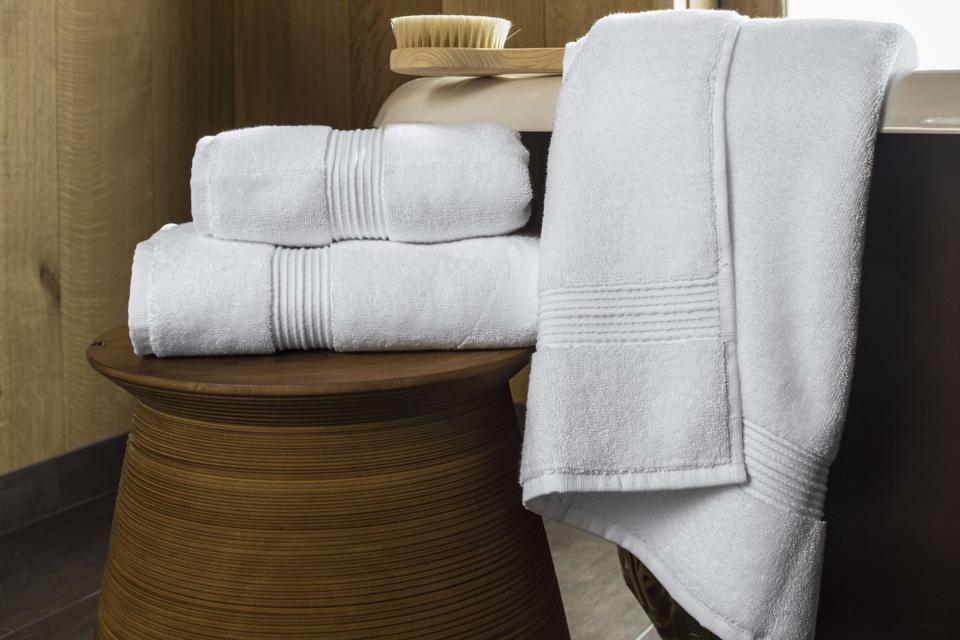


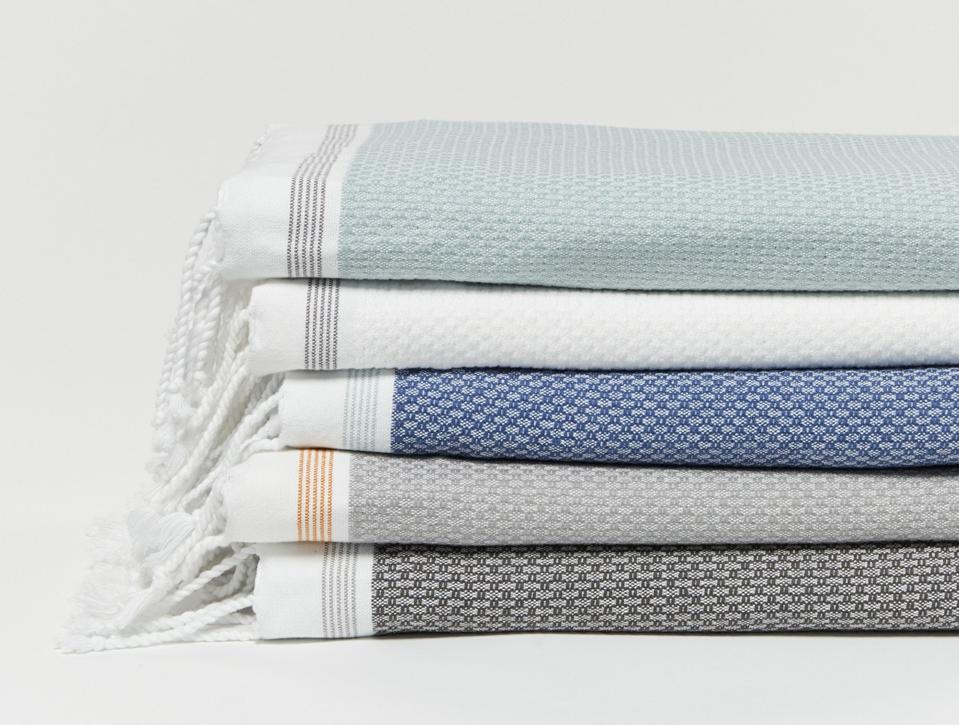


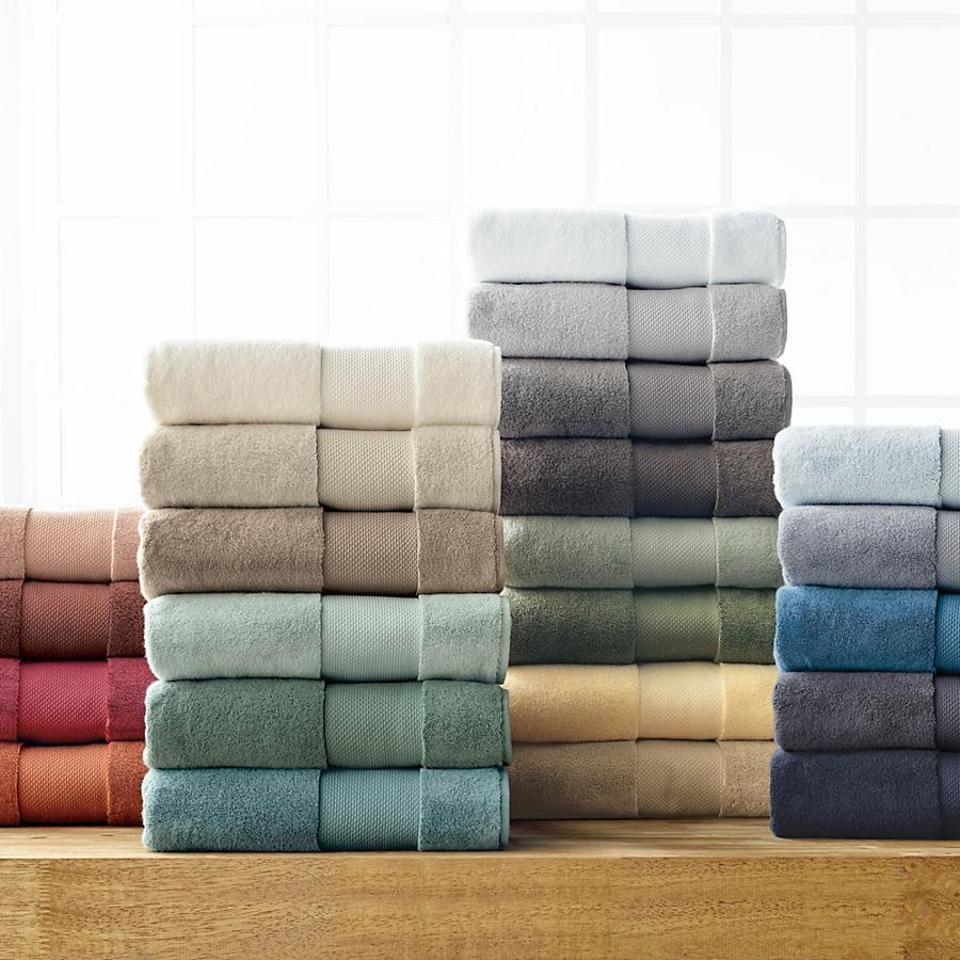

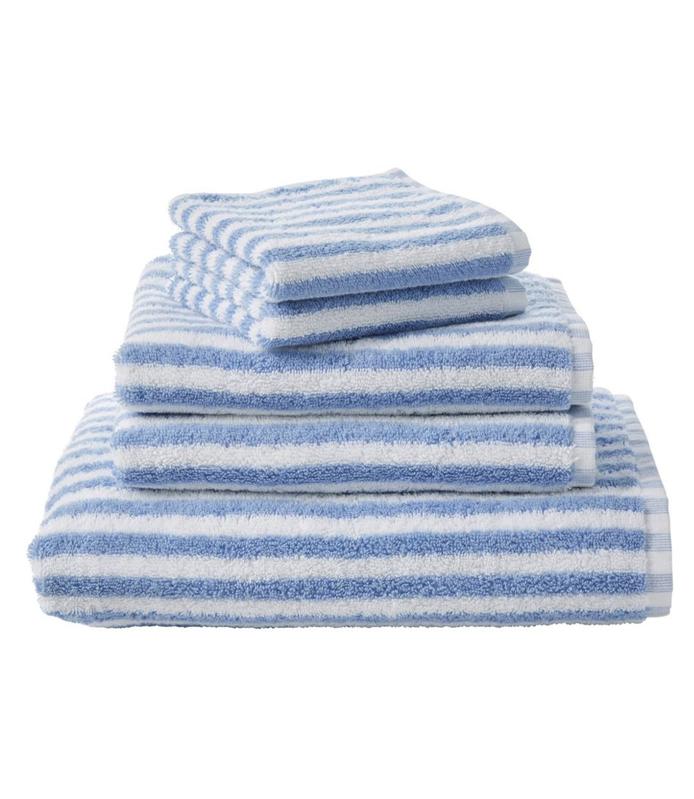




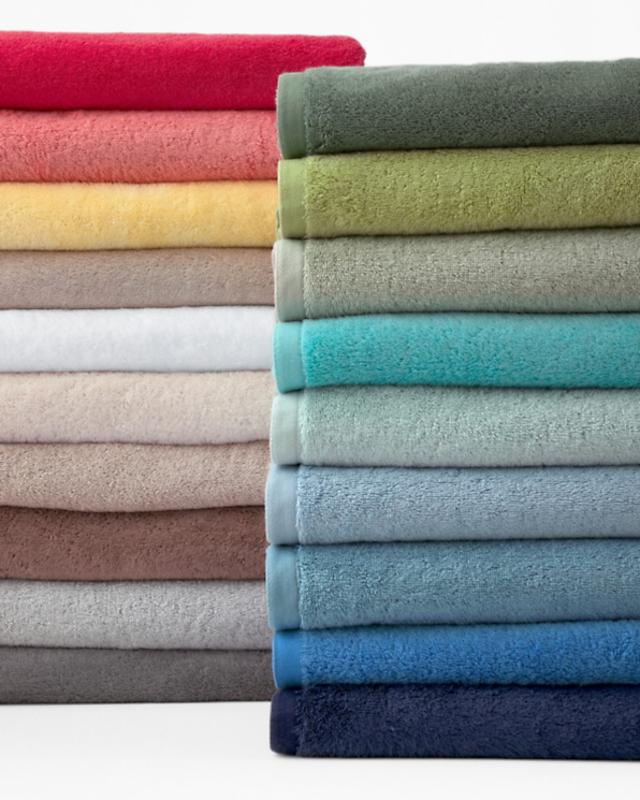















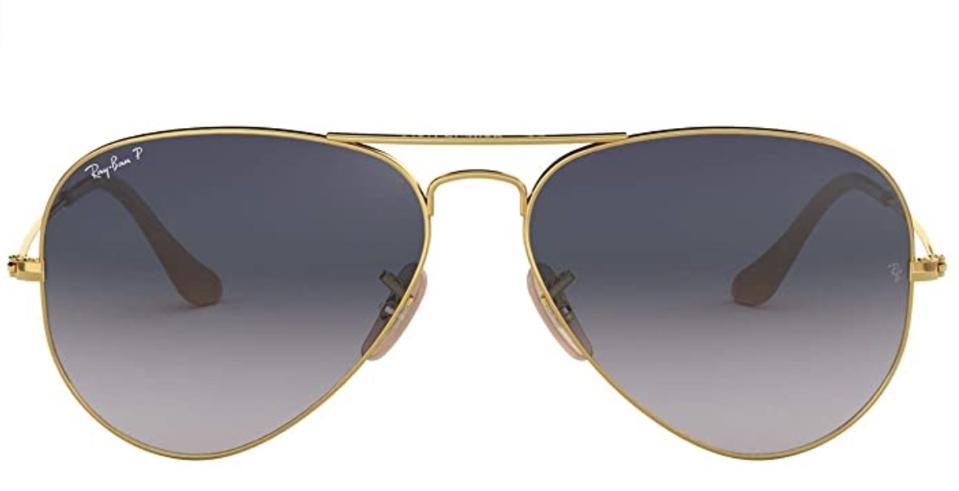
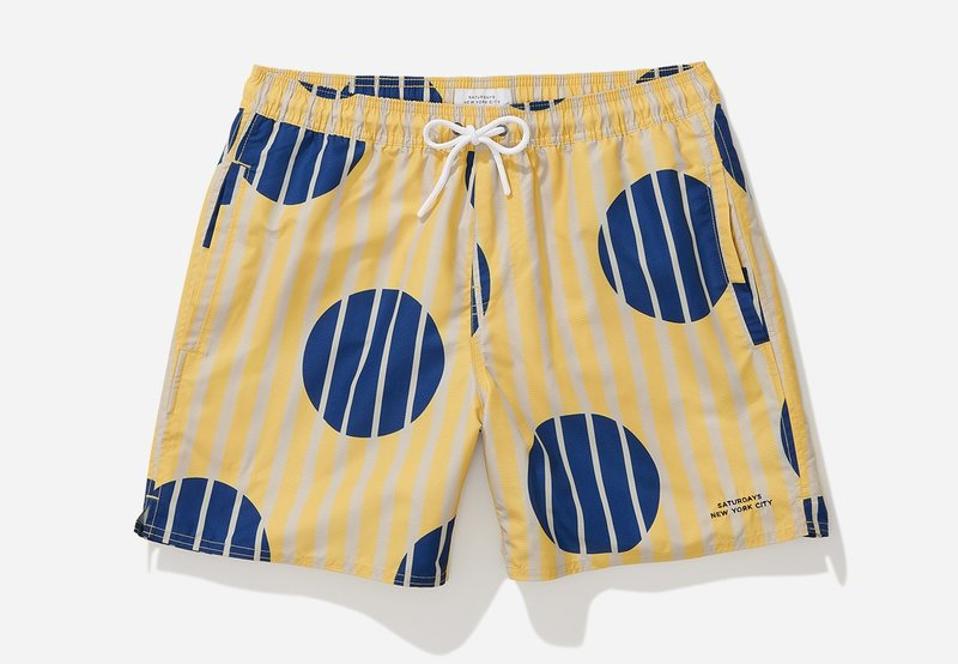







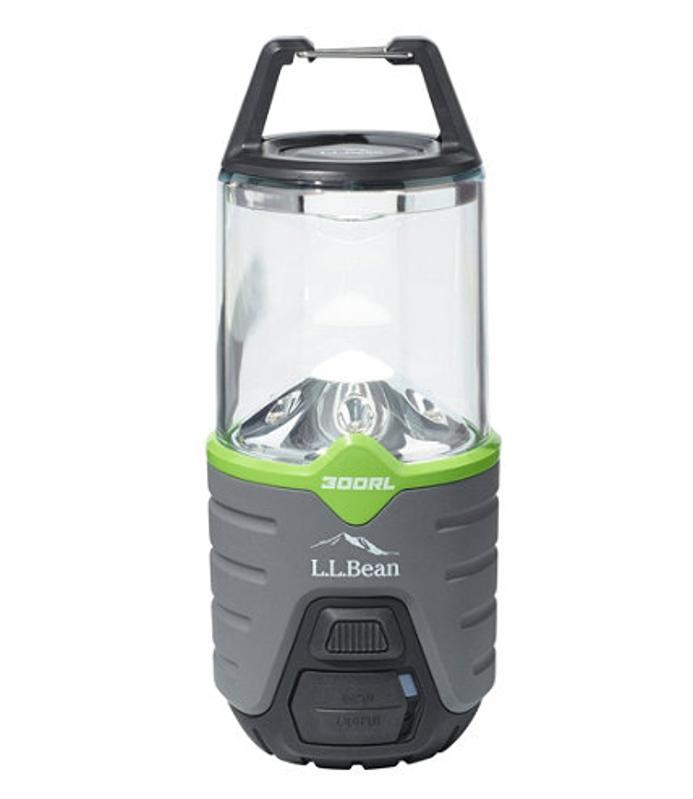












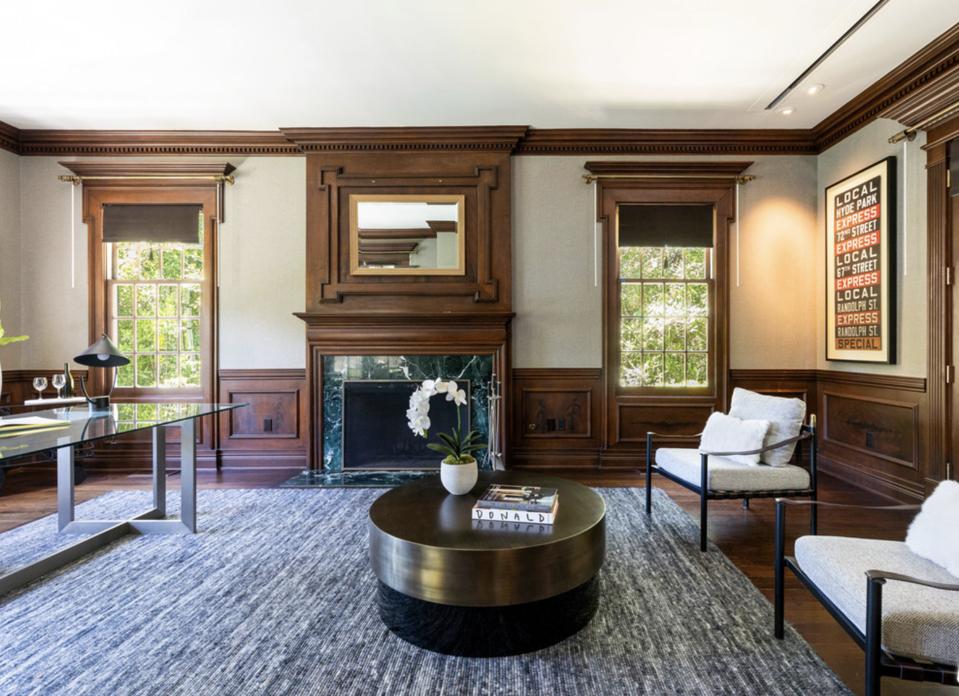





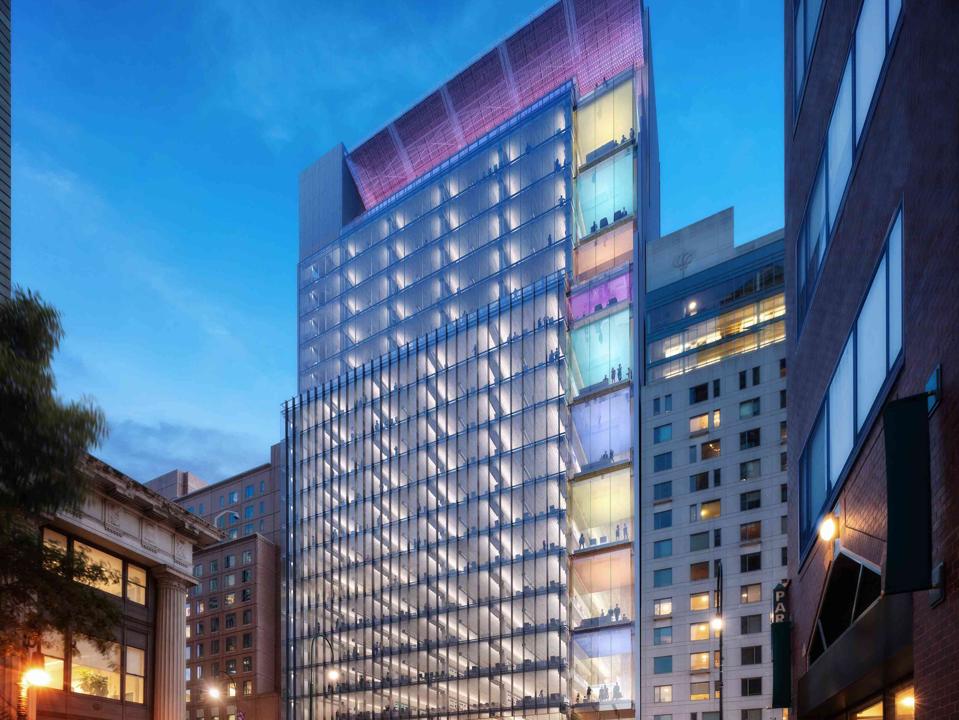









Comments
Post a Comment
If you have any doubt, please let me know....